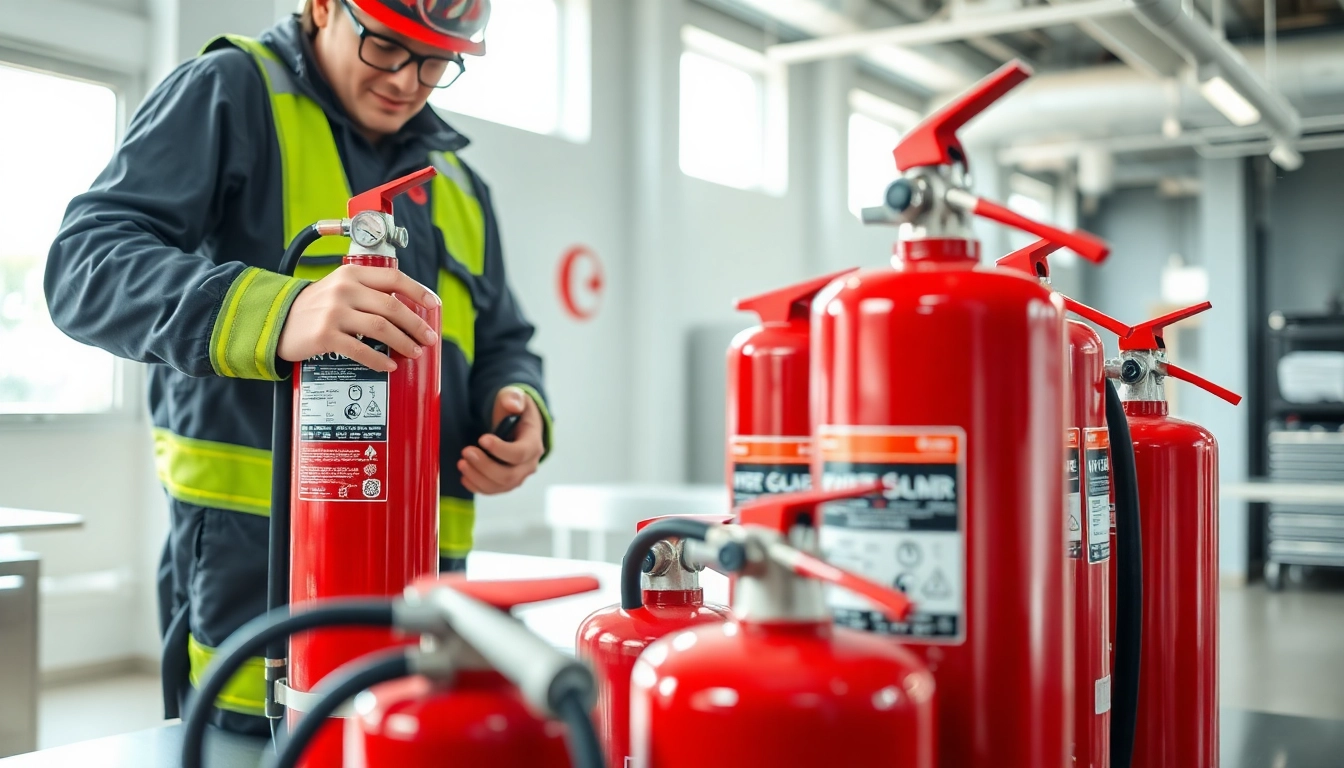Understanding Fire Extinguisher Maintenance
What is Fire Extinguisher Maintenance?
Fire extinguisher maintenance encompasses a series of inspection, testing, and servicing tasks performed on fire extinguishers to ensure they function correctly in emergencies. These include regular visual checks, detailed inspections, pressure testing, and replacement or replenishment of extinguishing agents. Fire extinguisher maintenance is essential for both safety and compliance, preventing fire-related incidents in residential and commercial settings.
Importance of Regular Inspection
Regular inspections of fire extinguishers are not only a legal requirement in many jurisdictions but also a vital aspect of workplace safety. They ensure that extinguishers are accessible, operable, and free from any issues that could compromise performance. Statistics show that improperly maintained extinguishers can lead to dire consequences during a fire event, including increased damage and human risk. Furthermore, regular maintenance can help identify problems before they become serious, ensuring that extinguishers will be effective if needed.
Common Types of Extinguishers and Their Care
Fire extinguishers come in various types, each tailored for different fire classes:
- Water extinguishers: Ideal for Class A fires (combustible materials like wood). They require regular checks for pressure and leaks.
- Foam extinguishers: Suitable for both Class A and B fires (flammable liquids). They must be inspected for fluid levels and seals regularly.
- DCO2 extinguishers: Intended for Class B and C fires (flammable gases and electrical fires). Maintenance includes ensuring the gauge is in the green zone and checking for any physical damage.
- Dry powder extinguishers: Versatile for Class A, B, and some C fires. They also need inspections for leaks and ensuring the powder is not caked.
Key Steps in Fire Extinguisher Maintenance
Monthly Visual Inspections
Every month, visual inspections should be performed on all fire extinguishers. This involves checking:
- Accessibility: Ensure that extinguishers are visible and not obstructed.
- Physical Condition: Look for any physical damage like dents, rust, or corrosion.
- Pressure Gauge: Confirm the needle is in the green zone, indicating adequate pressure.
- Labels and Instructions: Ensure that the instructions are readable and visible.
Annual Professional Inspections
In addition to monthly inspections, it is crucial to conduct a comprehensive annual inspection by a certified fire equipment professional. This inspection should include:
- Detailed examination of the extinguisher’s components, including the valve, nozzle, and body.
- Testing the extinguisher’s pressure during its operational capabilities.
- Recharging any extinguishing agents as necessary.
Hydrostatic Testing Procedures
Hydrostatic testing is a critical part of fire extinguisher maintenance, ensuring the cylinder can withstand the pressure required during use. Specific intervals are mandated for conducting hydrostatic tests, usually every 5 to 12 years depending on the type of extinguisher. The following steps typically outline the procedure:
- Disassemble the extinguisher and remove the contents.
- Fill the cylinder with water and pressurize it to the specified test pressure.
- Inspect the cylinder for leaks or bulges during the test period.
- Record the results and reassemble the extinguisher for future use.
Fire Extinguisher Maintenance Checklist
Essential Elements to Inspect
A thorough maintenance checklist should encompass the following elements:
- General physical condition of the extinguisher.
- Pressure gauge readings.
- Condition and presence of the safety pin and seals.
- Readability of labels and instructions.
- Recharge status, especially for rechargeable units.
Documentation and Record-Keeping
Maintaining detailed records of all inspections, maintenance, and testing is not only important for compliance but can also aid in identifying recurring issues that may arise. Keep a logbook or digital records that include:
- Date of inspection.
- Type of maintenance performed.
- Signature of the person performing the inspection.
- Any identified issues and corrective actions taken.
When to Schedule Professional Services
Professional services should be scheduled based on regulatory requirements and specific expiration dates for various maintenance checks. Always consult with local regulations which may mandate:
- Annual inspections for all fire extinguishers.
- Specific intervals for hydrostatic testing based on the type of extinguisher.
- Immediate servicing when an extinguisher has been used or shows signs of damage.
Legal Requirements for Fire Extinguisher Maintenance
Understanding Local Regulations
It’s imperative to understand local fire safety regulations, which vary by area and may dictate specific maintenance protocols for fire extinguishers. Typically, these regulations include requirements for:
- Location and accessibility of extinguishers in high-risk areas.
- Frequency of inspections based on fire code compliance.
- Mandatory training for employees handling fire extinguishers.
Compliance with OSHA Standards
The Occupational Safety and Health Administration (OSHA) has set forth standards (19 CFR 1910.157) that detail the requirements for fire extinguisher inspections and maintenance. Compliance with OSHA standards includes:
- Keeping extinguishers in designated places.
- Performing monthly and annual inspections accurately.
- Documenting maintenance actions and keeping records for at least a year.
Responsibilities of Business Owners
Business owners carry the ultimate responsibility for ensuring the safety and maintenance of fire extinguishers on their premises. This includes:
- Ensuring compliance with local fire codes and OSHA standards.
- Training employees on how to use fire extinguishers properly.
- Establishing a maintenance schedule and budget for professional services.
Best Practices for Effective Fire Extinguisher Maintenance
Training Staff in Fire Safety
All staff should receive adequate training on fire safety, including when and how to use fire extinguishers. Conducting regular fire drills and safety workshops ensures that employees can respond quickly in case of a fire emergency.
Keeping Maintenance Accessible
Make fire extinguisher maintenance accessible by providing clear signage and ensuring all staff know where the extinguishers are located. Regular reminders and visible checks can reinforce the importance of fire safety in the workplace.
Utilizing Technology for Reminders and Records
Leveraging technology can enhance fire extinguisher maintenance. Consider using digital calendars for inspection reminders or apps that allow staff to log checks and report issues instantly. This helps maintain compliance and ensures that fire safety records are accurate and up to date.



